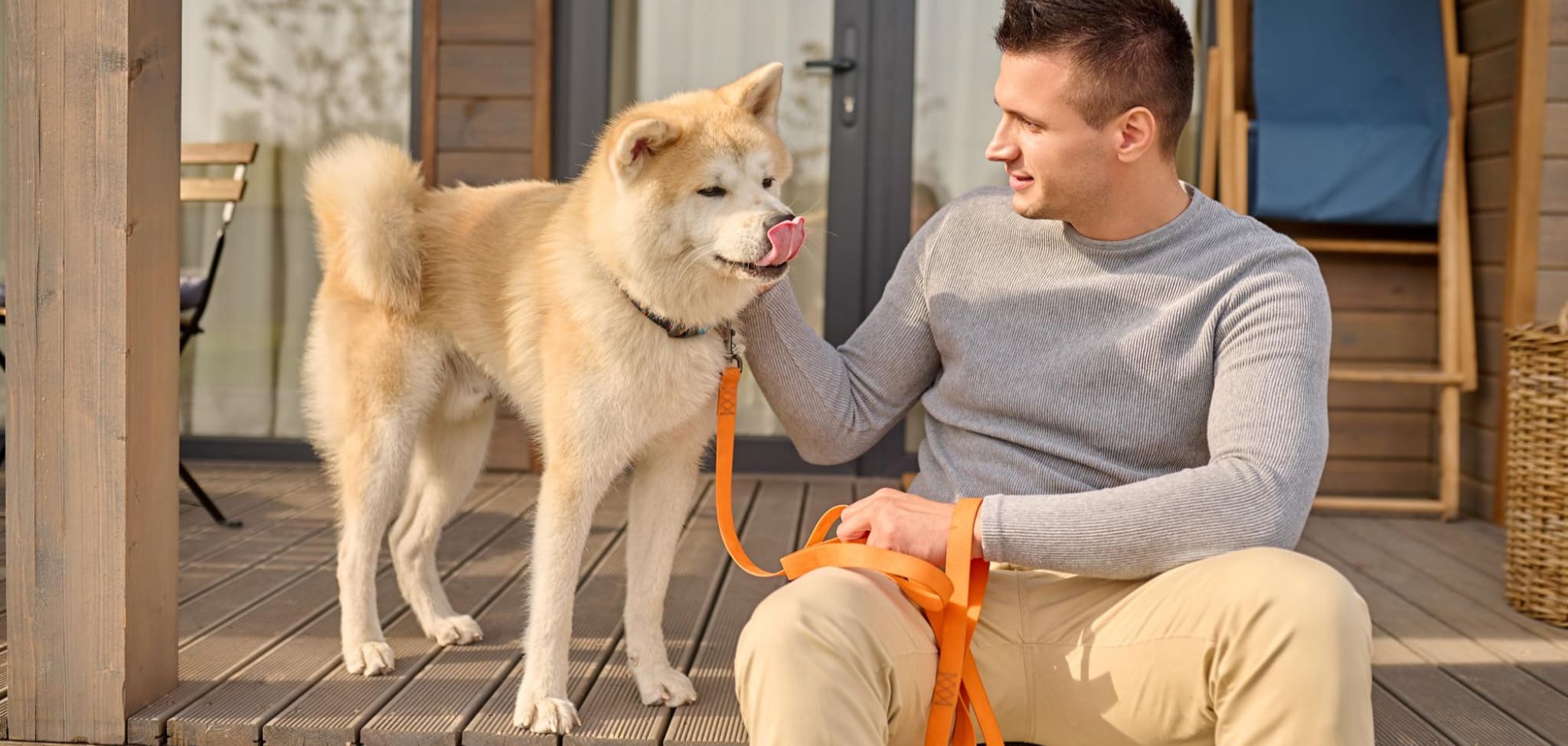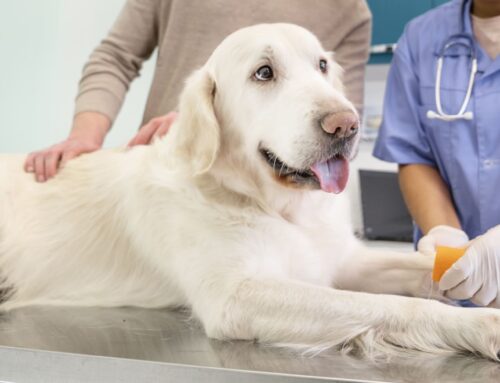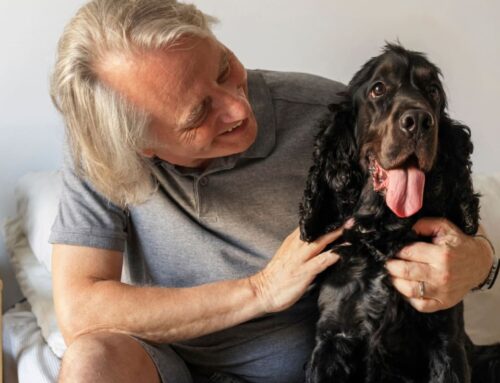Understanding Dog Communication and Behavior: Decoding the Canine Language
As pet owners, we often find ourselves wondering what our furry companions are thinking. While dogs can’t speak our language, they have their own unique way of communicating through body language and vocal cues. Understanding their signals is crucial for building a strong bond and ensuring their well-being. In this comprehensive guide, we will explore the fascinating world of dog communication and behavior, uncovering the meaning behind their various cues and gestures. So, grab a treat, sit back, and let’s dive into the canine language!
For more insights on the joys of canine companionship, don’t miss our article:The Incredible Benefits of Owning a Dog
The Importance of Body Language in Dog Communication
Unlike humans who rely heavily on verbal communication, dogs primarily use body language to express their emotions and intentions. While barks, whines, and growls play a role in their communication repertoire, it is their body posture, facial expressions, and tail movements that convey the most significant messages. Dogs have a wide range of body language cues, and by understanding these signals, we can decipher their thoughts and respond accordingly.
General Body Posture
A dog’s general body posture provides valuable insights into their emotional state. A relaxed and content dog will have a loose and wiggly body, indicating a sense of comfort and happiness. On the other hand, a tense and stiff body suggests anxiety, fear, or aggression. It’s essential to observe the overall posture of a dog to gauge their emotional well-being accurately.
Ear Position
The position of a dog’s ears can reveal a lot about their mood. When a dog’s ears are relaxed and in a natural position, it indicates a calm and content state. However, if the ears are pulled back or flattened against the head, it may signal fear, anxiety, or submission. Erect ears, pointing forward, often indicate alertness or excitement.
Tail Position
A dog’s tail is like a communication flag, conveying various messages through its position and movement. Contrary to popular belief, a wagging tail does not always indicate happiness. The speed, direction, and height of the wag are crucial factors to consider. A broad, slow wag that includes the entire body suggests relaxation and friendliness. A faster, rigid wag with the tail held high may indicate arousal, excitement, or even aggression. A tucked tail or a tail held low between the legs signals fear, anxiety, or submission.
Mouth Shape and Facial Expression
A dog’s mouth shape and facial expression can provide valuable clues about their emotional state. Lip licking, yawning, and tongue flicks are often calming signals that dogs use to alleviate stress or signal appeasement. These behaviors are not to be confused with hunger or tiredness in dogs. Similarly, a relaxed and open mouth with a soft expression indicates a calm and content dog. A tense or tightly closed mouth, wrinkled muzzle, or bared teeth may signal fear, aggression, or discomfort.
Calming Signals: Understanding Canine Stress and Anxiety
Just like humans, dogs experience stress and anxiety in various situations. To cope with these emotions, dogs utilize calming signals, which are subtle gestures aimed at reducing tension and diffusing potential conflicts. By recognizing and responding to these signals, we can help our dogs feel more secure and comfortable in their environment.
Lip Licking
Lip licking is a common calming signal displayed by dogs. While humans may associate it with hunger, dogs primarily use it to communicate stress or anxiety. If you notice your dog licking their lips in certain situations, it’s a sign that they are trying to calm themselves or signal their discomfort. It’s essential to pay attention to the context and other body language cues to understand the underlying emotions behind this behavior.
Yawning
Yawning in dogs is not always a sign of tiredness. In fact, dogs often yawn as a way to release tension and alleviate stress. When faced with a challenging situation or feeling anxious, dogs may yawn to self-soothe and signal their need for a break or to diffuse potential conflicts. It’s important to recognize yawning as a calming signal and provide your dog with the space and support they need.
Stretching
Stretching is another common calming signal observed in dogs. When a dog engages in stretching behavior, it helps them release pent-up energy and relax their muscles. Many dogs stretch when they are excited or anticipating an activity, as a way to channel their excitement into a more controlled state. Recognizing and allowing your dog to stretch can help them find calmness and relieve anxiety.
Shake Off
A shake-off is a physical release of tension and stress in dogs. Similar to how humans may shake their hands or limbs after a stressful event, dogs shake their bodies to release built-up energy and calm themselves down. You may notice your dog shaking after a particularly intense play session or when they encounter a stressful situation. Encouraging this natural behavior can help your dog regulate their emotions and find relief.
Sniffing
Sniffing is a natural behavior for dogs, and they use it as a way to gather information about their environment. However, dogs may also engage in excessive sniffing as a calming signal. When faced with a stressful situation, dogs may take a break from the intensity by diverting their attention to sniffing the ground or objects. It serves as a temporary distraction and allows them to de-escalate the situation.
Scratching or Itching
Dogs may exhibit scratching or itching behavior as a way to redirect their focus or diffuse tension. Similar to sniffing, scratching provides a temporary distraction from a stressful situation and allows the dog to shift their attention. It’s important to differentiate between normal scratching and excessive scratching due to allergies or other medical conditions. If you notice persistent scratching, it’s best to consult with a veterinarian to rule out any underlying health issues.
Panting
Panting is a common behavior in dogs, especially when they are hot or exerting themselves physically. However, panting can also be a sign of stress or anxiety. Rapid and shallow panting, accompanied by a retracted tongue, may indicate a dog’s discomfort or heightened arousal. It’s essential to consider the context and other body language cues to determine whether panting is due to heat or an emotional response.
Additional Calming Signals
In addition to the signals mentioned above, dogs may exhibit other calming behaviors, such as puffing or large sighs. These behaviors serve as self-soothing mechanisms and indicate a dog’s attempt to alleviate stress or anxiety. It’s crucial to pay attention to these subtle cues and respond accordingly to support your dog’s emotional well-being.
Fear Indicators: Recognizing Anxiety and Distress in Dogs
While calming signals help dogs cope with stress and anxiety, fear indicators indicate a more intense emotional state. Dogs display fear indicators when they feel threatened or overwhelmed by a situation. Recognizing these signals is essential for providing appropriate support and ensuring the safety of both the dog and those around them.
Whale Eyes
Whale eyes, also known as moon eyes, occur when a dog averts their gaze and the whites of their eyes become visible. This is often a sign of fear or anxiety in dogs. When faced with a potentially threatening situation, dogs may avoid direct eye contact as a way to reduce the risk of confrontation. It’s important to respect a dog’s need for personal space and avoid any actions that may escalate their fear or discomfort.
Tucked Tail
A tucked tail is a clear indicator of fear or nervousness in dogs. When a dog tucks their tail between their legs, it signifies their attempt to protect themselves and appear smaller in the face of perceived danger. It’s crucial to create a safe and supportive environment for a dog displaying this behavior and to avoid any actions that may further escalate their fear.
Tight Mouth and Showing Teeth
A tightly closed mouth or a curled lip that reveals teeth indicates fear or anxiety in dogs. Dogs may exhibit these behaviors as a way to communicate their discomfort and signal a warning to others. It’s important to respect a dog’s boundaries and avoid any actions that may provoke aggression or escalate their fear.
Back Weight Shift and Leg Lift
A back weight shift is when a dog shifts their weight backward, attempting to create distance from a potential threat. This behavior is often accompanied by a tucked tail and a tense body posture. Similarly, a dog may lift their leg as a sign of stress, anxiety, or heightened excitement. It’s crucial to recognize these signals and provide the dog with space and support to alleviate their unease.
Leaning Away and Flattened Ears
When a dog leans away from a person or object, it’s a clear indication that they are seeking distance and personal space. This behavior is often accompanied by flattened ears, which further emphasize the dog’s discomfort and desire to avoid confrontation. Respecting a dog’s need for space is essential to prevent further stress or anxiety.
Additional Fear Indicators
Other fear indicators in dogs include flattened ears, a tense or wrinkled face, raised hackles (hair along the back and shoulders), and a raised paw. These behaviors and physical changes in a dog’s body language signal their heightened emotional state and should be taken seriously. It’s crucial to create a safe and supportive environment for a fearful dog and seek professional help if needed.
The Complexity of Dog Communication: Dominance and Submission
The concepts of dominance and submission have long been associated with dog behavior and communication. However, recent research suggests that these terms may not accurately capture the complexity of canine communication and social dynamics. While dogs do exhibit assertive and submissive behaviors, it’s crucial to understand that these behaviors are part of a broader communication system aimed at maintaining social harmony and resolving conflicts.
Dominance and Submissive Signals
Dogs display assertive or dominant behaviors to establish their position in social hierarchies or to communicate their intentions. These behaviors include direct eye contact, raised hackles, stiff body posture, and a forward weight shift. It’s important to note that assertive behaviors can escalate into aggression if not appropriately addressed or if the dog feels threatened or challenged.
On the other hand, submissive behaviors are displayed by dogs to signal deference, avoid conflict, or diffuse potential aggression. These behaviors include avoiding direct eye contact, lowering the body, rolling over to expose the belly, and raising a front paw. It’s crucial to recognize and respect a dog’s submissive signals to maintain a peaceful and harmonious interaction.
Misconceptions About Dominance and Submission
It’s important to dispel some common misconceptions about dominance and submission in dog behavior. Firstly, dominance is not synonymous with aggression or a desire for control. Dogs display dominant behaviors as a way to establish order and maintain social harmony, not to exert power over others.
Likewise, submission does not indicate weakness or a lack of confidence. Dogs display submissive behaviors to avoid conflict and maintain social bonds. It’s important to remember that dogs are individuals, and their behavior should be evaluated in context, considering their unique personalities and past experiences.
The Complexity of Canine Communication
Dog communication is incredibly nuanced and multifaceted. It involves a combination of vocalizations, body language, and olfactory cues. Dogs rely on a wide range of signals to express their emotions, intentions, and needs. By observing and understanding the complexity of canine communication, we can build stronger bonds with our furry companions and create a more harmonious living environment.
The Role of Humans in Dog Communication
As dog owners, it is our responsibility to learn and understand the language of our canine companions. By recognizing and appropriately responding to their body language cues, we can ensure their well-being and strengthen our bond with them. Here are some important considerations for effective communication with dogs:
Education and Observation
Educating ourselves about dog behavior and communication is the first step toward effective communication. By learning about their body language, vocalizations, and stress signals, we can better understand their needs and emotions. Observing our dogs closely in various situations allows us to recognize their individual communication styles and tailor our responses accordingly.
Respect Personal Space and Boundaries
Respecting a dog’s personal space and boundaries is crucial for building trust and fostering positive interactions. Dogs, like humans, have different comfort levels when it comes to physical contact and social interactions. Pay attention to their body language and respond accordingly. If a dog shows signs of discomfort or stress, give them space and avoid actions that may escalate their anxiety.
Positive Reinforcement and Rewards
Positive reinforcement is a powerful tool in dog training and communication. By rewarding desired behaviors with treats, praise, or play, we can reinforce positive associations and encourage their repetition. This approach strengthens our communication with dogs and fosters a cooperative and trusting relationship.
Seek Professional Help
If you are struggling to understand or address your dog’s behavior or communication challenges, it is essential to seek professional help. Certified dog trainers, behaviorists, or veterinarians can provide expert guidance and support tailored to your dog’s specific needs. They can help you navigate complex behavioral issues and ensure the well-being of both you and your furry friend.
Conclusion
Understanding dog communication and behavior is a lifelong journey. By learning their unique language and responding appropriately to their signals, we can cultivate a deep bond of trust and understanding with our canine companions. Remember to observe their body language, respect their boundaries, and provide positive reinforcement to encourage desired behaviors. With patience, empathy, and a commitment to learning, we can bridge the communication gap between humans and dogs and build a strong and harmonious relationship.
LEARN & GROW CORNER
Baseball for Beginners
Baseball for Beginners: A Comprehensive Guide to the Basics Baseball is one of the most popular sports in the United States, enjoyed by millions of people of all ages. It's a game that requires [...]
Collecting Paper Currency
Collecting Paper Currency Hobby: Tips and Tricks for Building a Unique Collection Are you interested in the world of paper currency collecting? If so, you're in for a treat. Collecting paper money is a [...]
Coin Collecting Hobby
Coin Collecting Hobby: A Guide to Starting Your Collection If you've ever found yourself fascinated by the intricate designs and historical significance of coins, you might want to consider starting a coin collecting hobby. [...]
The Stamp Collecting
The Stamp Collecting: A Comprehensive Guide Stamp collecting is a fascinating hobby that has been enjoyed by people all over the world for over a century. Whether you're a seasoned collector or a newcomer [...]
ABC Gardening Hobby
ABC Gardening Hobby: Tips and Tricks for Beginners If you're looking for a rewarding and enjoyable hobby, gardening might be the perfect fit for you. A B C Gardening is a beginner-friendly approach to [...]










